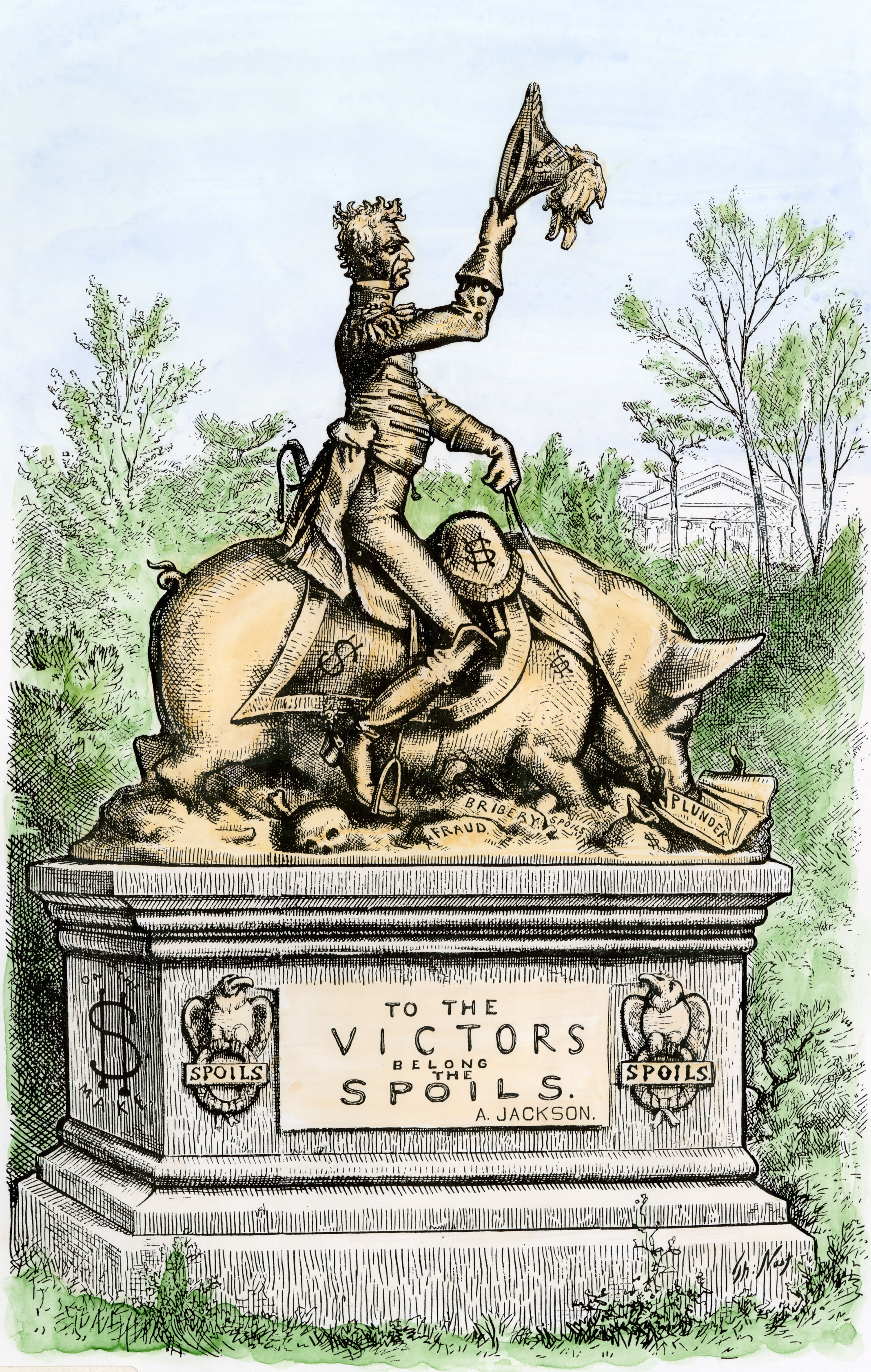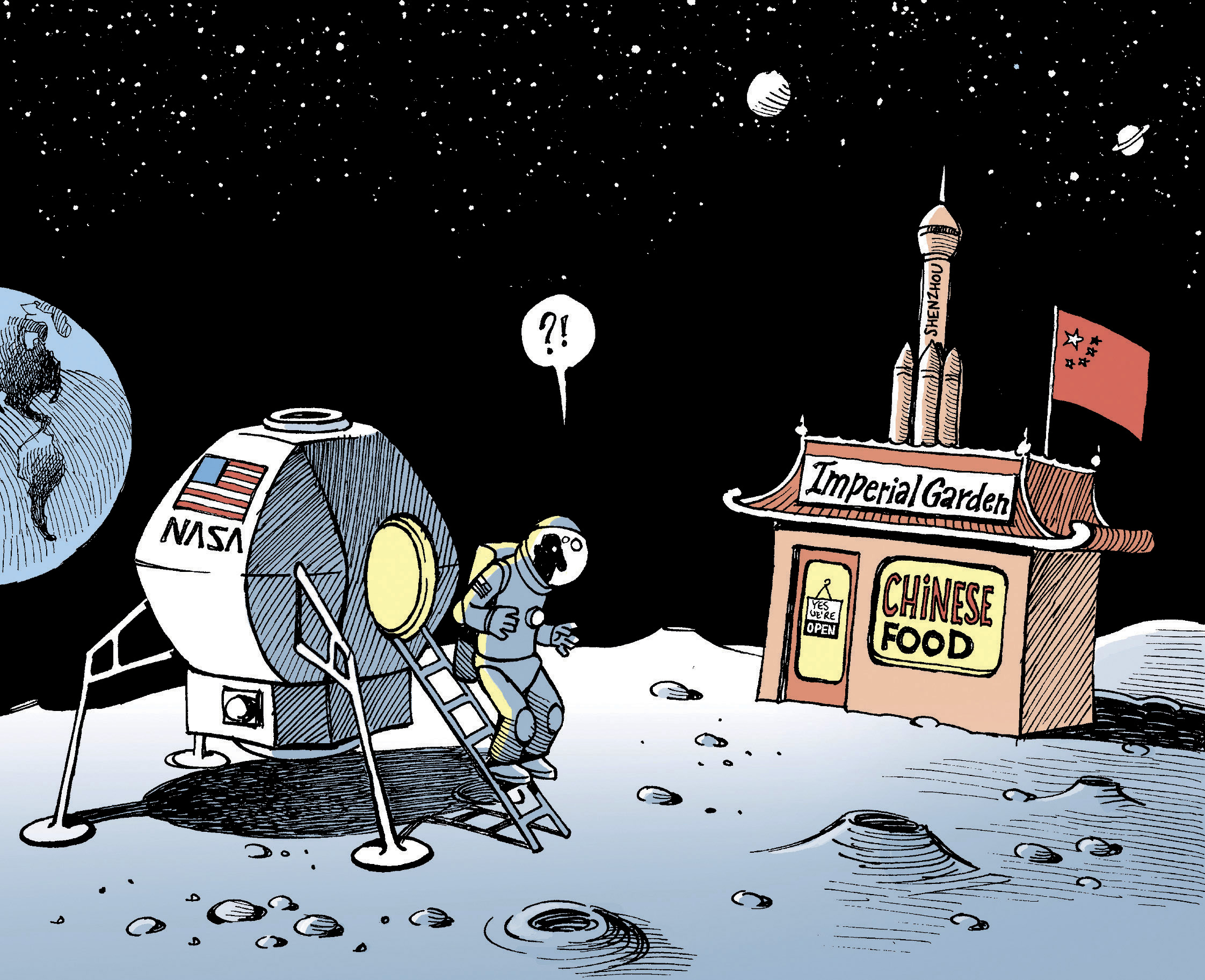“No topic is unworthy of caricature”

For caricature there are no taboos and even sensitive topics are admissible, according to Anette Gehrig, director of the Basel Cartoon Museum.
On the other hand, she notes, the cartoon is having a tough time in today’s media. It tends to be the first victim of cost cutting and can’t compete with the colour photograph.
The Basel Cartoon Museum is the only museum in Switzerland dedicated to the art of satire. Gehrig spends her working day exploring this unique medium, which makes some people laugh and infuriates others.
swissinfo.ch: How has the role of cartooning developed in recent decades?
A.G.: Since the 1960s the number of cartoons has decreased drastically. That certainly has to do with the fact that colour found its way into the media and it got much easier to produce photos and pictures. Photography has taken over a lot of territory in recent years and pushed out caricature and illustration. Only a few newspapers now seem to know that a cartoon can stand as an independent statement without any text being needed.
At the start of the 20th century, cartooning and drawing played a major role – especially in America. That was the great age of cartooning and also of great newspapers. At that time it was the usual thing for newspapers to have an artist, an illustrator on staff who commented on social and political happenings and so carried on a dialogue with the public.
We have left that far behind. In Switzerland, there are only a few papers left that can manage a comic-strip. Time frames have speeded up, as well as the need to cut costs. Newspapers amalgamate and buy their comic-strips, so that artists no longer have a place, which I find a pity.

More
Political cartoonist sharpens his pen
swissinfo.ch: When is a cartoon on a political or social topic appropriate?
Anette Gehrig: I would not exclude any topic. There is no topic unworthy of caricature. In order for caricaturists to bring off the humorous distortion, they have to know the topic, work with the material and analyse it. They must also include the social context.
swissinfo.ch: Can cartoons express more than words?
A.G.: Here one thinks inevitably of the cliché that “a picture is worth a thousand words”. A cartoon can bring a whole issue to a point, while the humour inherent in caricature can have many different nuances. A text or even comic reportage may be better at looking at things from several different aspects.
swissinfo.ch: Caricature involves satire. The German satirist Kurt Tucholsky once said that satire is allowed to do anything. Are cartoons on sensitive themes like the Holocaust, religion or the disabled really permissible?
A.G.: Yes, if they are really satire. In our society we have freedom of expression. A cartoon is a criticism of a social situation. It can come from a direction or in a form which people may find unpleasant. We have to put up with that.
If it is a serious attempt to grapple with a theme, it is a good way to bring the basic issues into focus – even if, or precisely because, it hurts.
Caricature is defined by the Oxford English Dictionary as “grotesque or ludicrous representation of persons or things by exaggeration of their most characteristic and striking features”.
A cartoon, particularly an editorial cartoon in a newspaper, uses caricature to comment on a current social or political theme in a humorous or thought-provoking way.
A comic-strip is a series of several cartoon pictures that tells a story or makes a point.
A comic (magazine) tells a story or stories by means of a succession of pictures.
A graphic novel is a long, often more complex and ambitious type of comic book.
swissinfo.ch: Freedom of expression does not meet with universal acceptance. Just think of the violent protests about the Mohammed cartoons…
A.G.: When it is a matter of religion, where people’s emotions are affected, we have to be aware, at least as a museum, that there are certain sensitivities out there. When we put on an exhibition of Arab cartoons, we have to give a lot of explanation and provide the societal background.
Charlie Hebdo, which published the most recent caricatures of Mohammed in France, is a satirical magazine, so clearly you have to expect satire there – you know what’s in it and can choose to read it or not. But when the atmosphere gets heated up, one has to wonder if one should be doing a cartoon on a particular theme at all.
swissinfo.ch: So caricature and cartooning is not a universal medium of expression which is understood by all cultures and parts of the world in the same way?
A.G.: Graphic criticism and exaggeration – caricature, as we define it here – is unknown in China, for example. There, caricature is much more symbolic, much more oblique. But criticism exists there too. And that is exactly the trouble with universal messages: you have to be able to read them but also know the context, the code.
swissinfo.ch: Maintaining press freedom and respecting people’s sensitivities – is that a balancing act or is it just impossible?
A.G.: Caricature operates with exaggeration and distortion. It takes a stand and can be aggressive. It depends on your own viewpoint whether a cartoon makes you laugh or makes you angry. That is the reason why caricature is often regarded as a weapon.
According to another statement by Tucholsky, caricaturists are disappointed idealists who think in terms of an ideal state of affairs. They bring social situations into caricature and in order to explore them, they exaggerate them. If a cartoon does not move and disturb you, then maybe it’s not a good cartoon. Perhaps caricature just needs to be disrespectful.
The Collection of Caricatures & Cartoons foundation was started in 1979. The museum has been in operation for 30 years and has been headed by Anette Gehrig since 2008.
The Basel Cartoon Museum is the only museum in Switzerland to dedicate itself exclusively to the art of satire – from caricature to humour magazines to comics.
The collection contains about 3,400 original works and 2,000 on loan dealing with themes from society, politics, culture and everyday life. They form a representative sample of cartoons and caricatures in various styles by about 700 artists of the 20th and 21st centuries from about 40 countries.
Patrick Chappatte (Le Temps, NZZ am Sonntag, Herald Tribune), Orlando Eisenmann (Der Bund), Felix Schaad (Tages-Anzeiger), Max Spring (Berner Zeitung), Mix&Remix (Hebdo), Raymond Burki (24 heures), Thierry Barrigue (Vigousse).
(Translated from German by Terence MacNamee)

In compliance with the JTI standards
More: SWI swissinfo.ch certified by the Journalism Trust Initiative
You can find an overview of ongoing debates with our journalists here. Please join us!
If you want to start a conversation about a topic raised in this article or want to report factual errors, email us at english@swissinfo.ch.